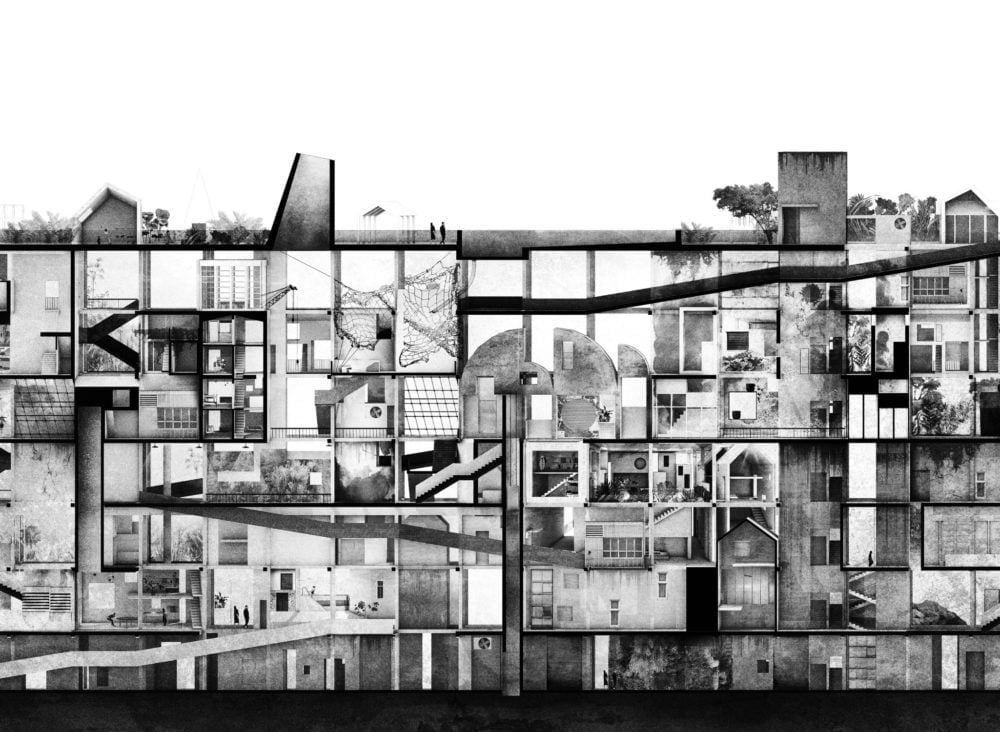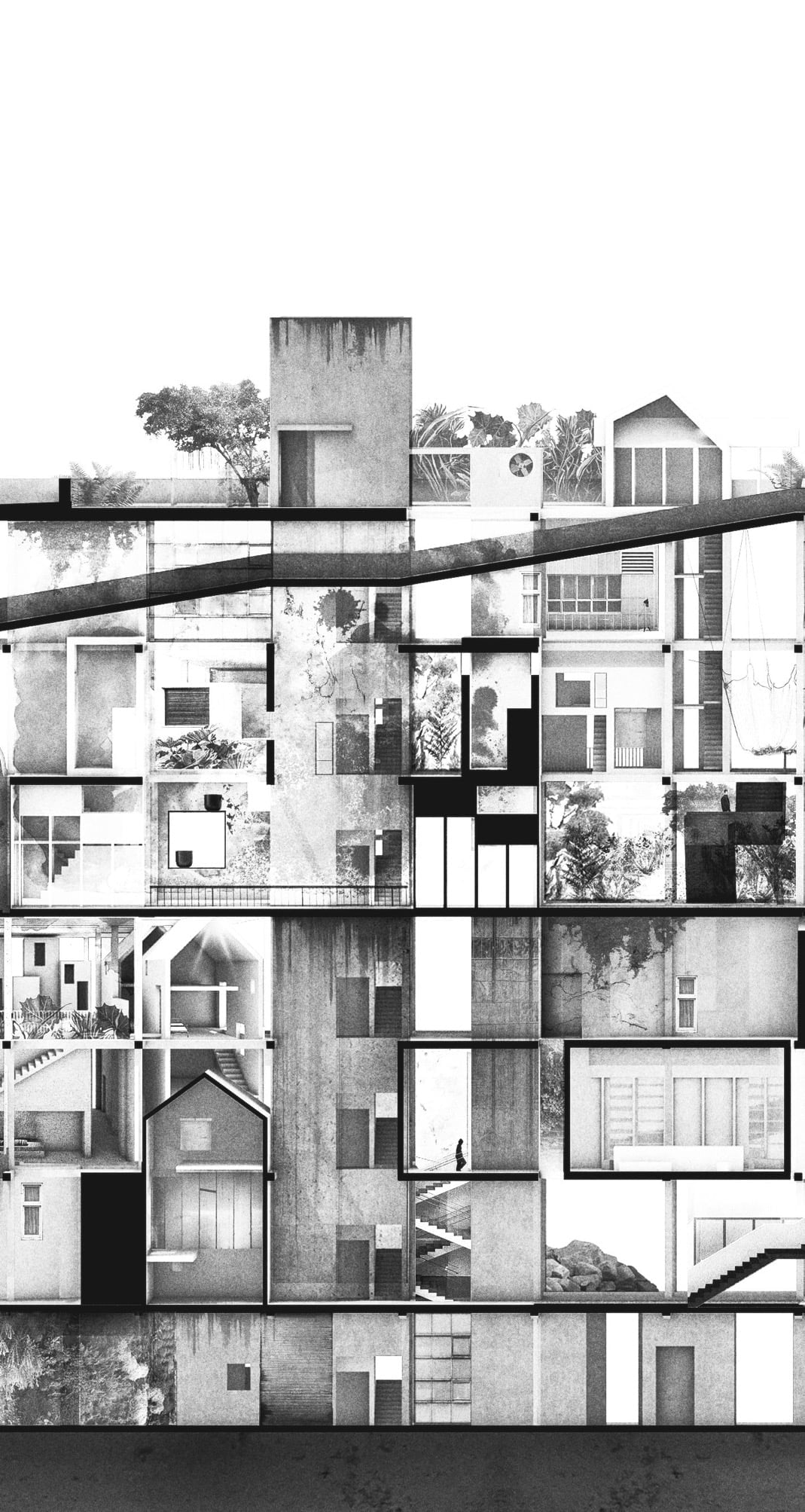
Site Situation
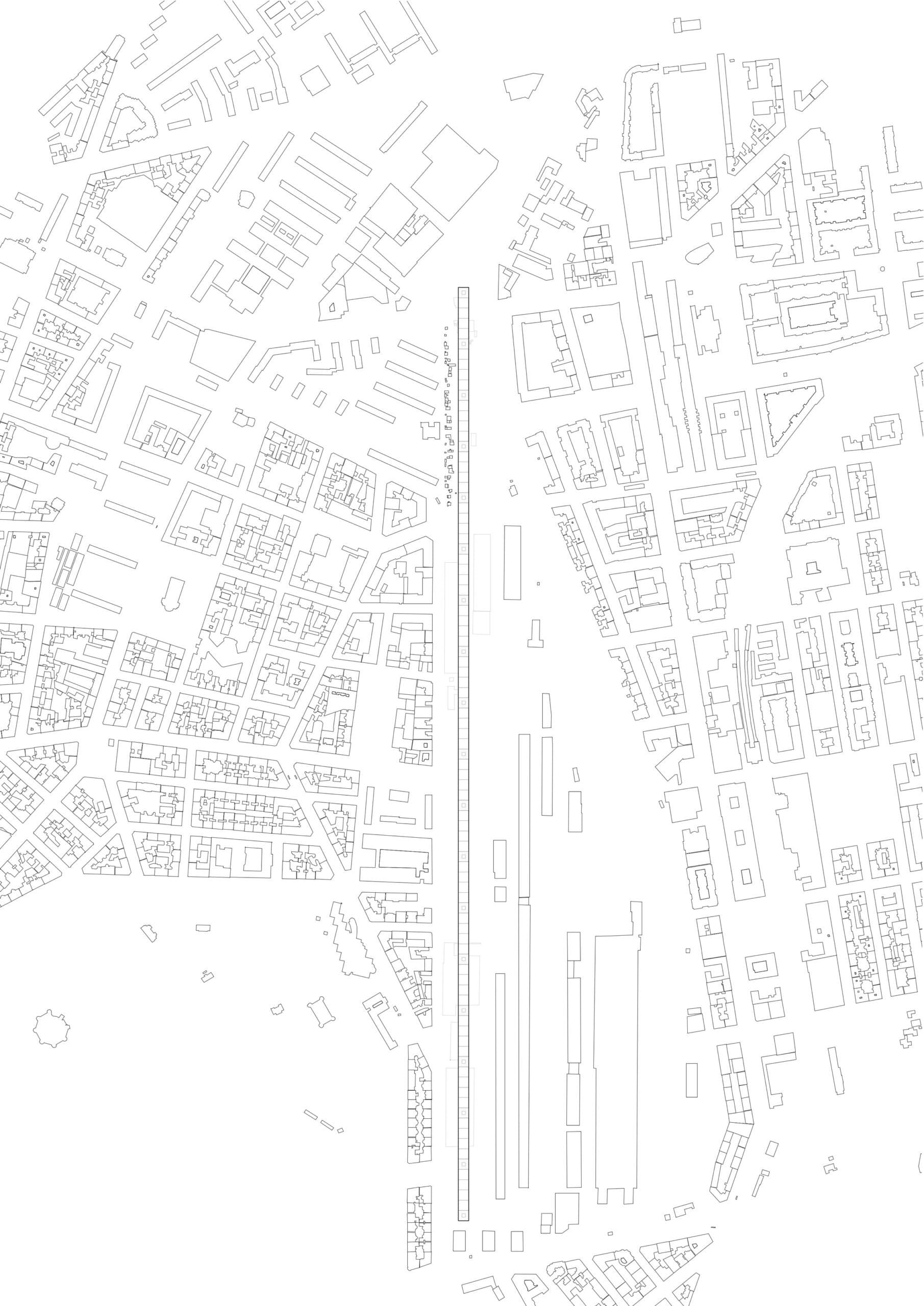
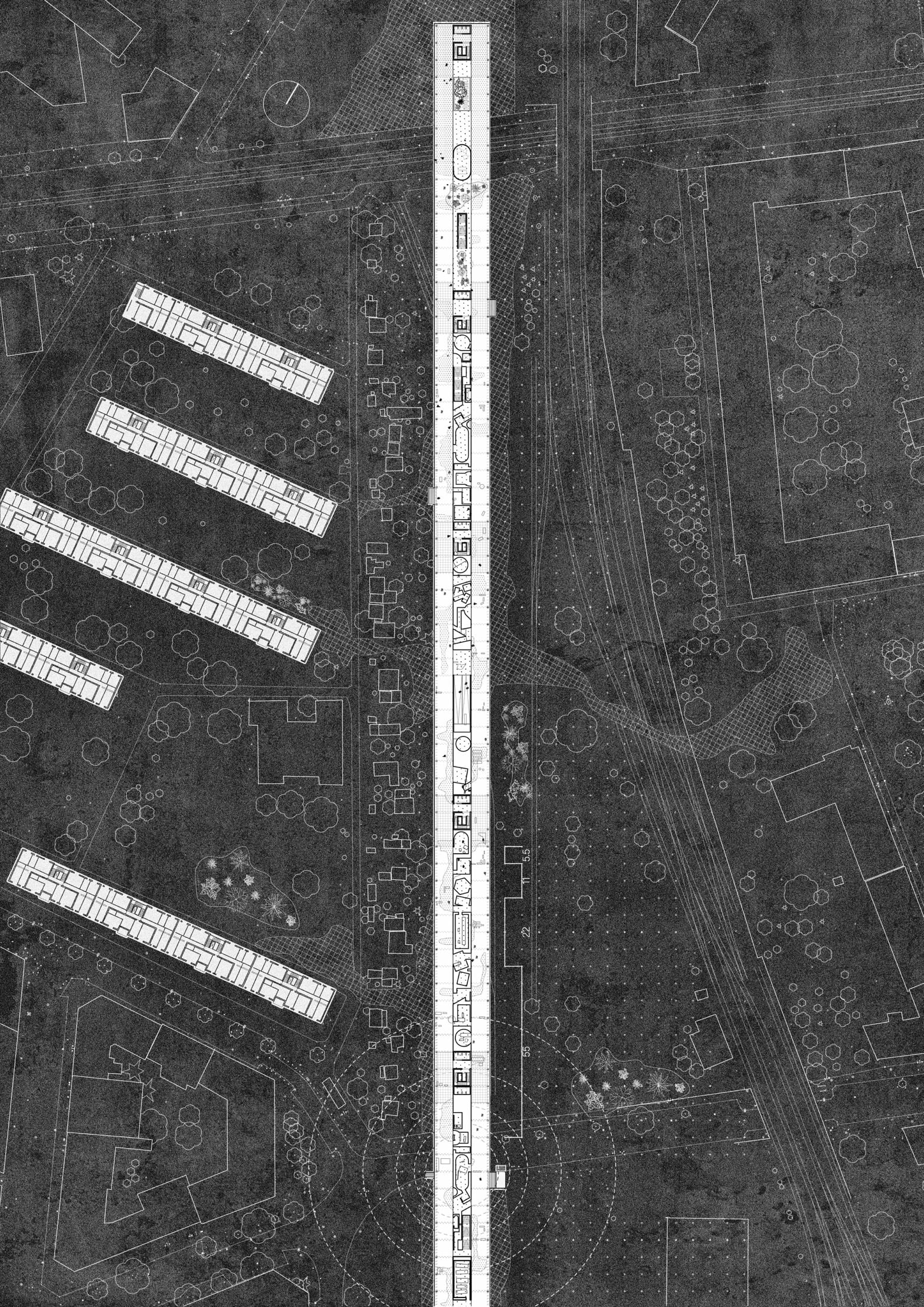
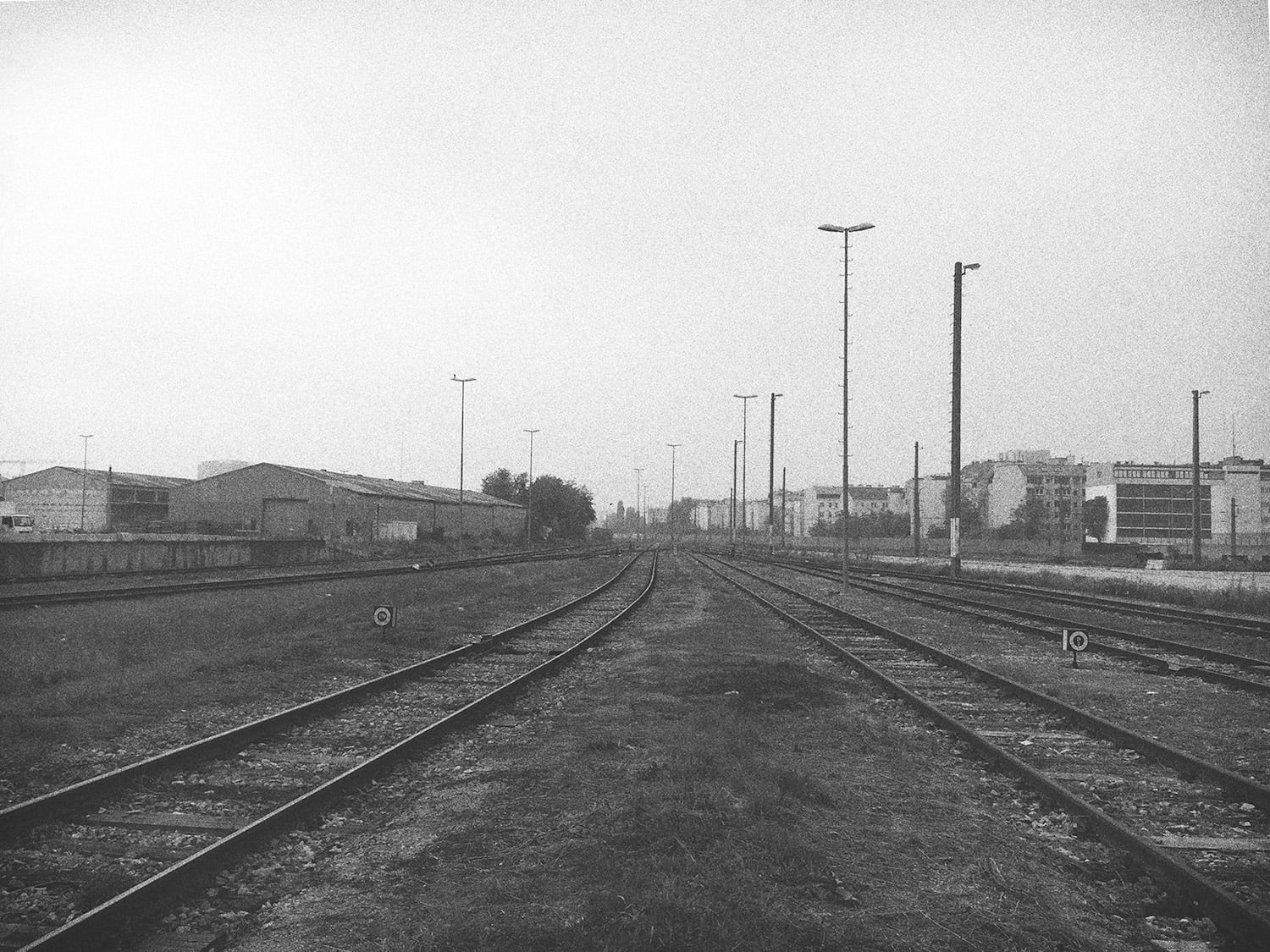
Support and Infill
A spatial grid, consisting of a skeleton supported by cores, spreads like an endless line along the railway area. Only providing essential technical infrastructure and constructive support, the structure is meant to be the breeding ground for a new kind of urban inhabitation. As a neutral space in the beginning, with similar sections at every given point, it waits to be animated. In a process of urban settlement, in the sense of territorial occupation and reclamation, the architecture is supposed to change with the appropriation through its inhabitants.
Entities inside the grid can be purchased and filled up with self-built living units, supported by workshops and standardized elements like floor panels. Starting to grow at different locations, living clusters expand and create shared spaces at their interfaces. The emerging neighborhoods/ internal villages are each organized in sections (between the main cores) and define individual rules for further consolidation (such as the density of built structure, accessibility, and requirements for new inhabitants). While the housing grid is condensed by adding new levels, stairs, and buildings, the whole structure transforms into a more programmed area, controlled by the residents. This leads to the creation of different habitation scenarios, from arranged row houses, and adjoining internal streets up to chaotic dense structures forming a continuous living sphere. The ground floor area and the roof area, are unrestrictedly accessible and work as the interfaces to the surrounding city.
The proposal tries to point out possibilities to create a structure that provides the layering of urban characteristics, in a way that transforms public street life in seamless transitions into a space of privacy. The structure should not be so much a defined floor plan as a framework in which urban space and closed living entities can influence each other in dynamic processes. The idea is that the rare public ground, as the basis for the entire urban fabric, is multiplied as a section into vertical levels. In the form of a line, the design interprets the (pedestrian) street space that can be extended and explored on different levels. First of all, the whole structure will be understood not as a closed building but as a public space in whose grid increasingly different points of view in organization and development can crystallize. Various scenarios should be possible, ranging from shared community life to single living units and even the retired nature of the allotment gardens. The design isn’t only aimed at a specific social class but integrates the entire spectrum of urban living in clusters of different use, accessibility, and density.
The organization of the construction should first be done by providing the space and essential building infrastructure. Citizens can use the levels for example as a park, a market, and for other public activities. In the next step, individual entities of the grid (5.5m x 5.5m) could be rented or sold for a fixed (or subsidized) price, and then occupied more and more by self-sufficient building units used both as living space and for communal as well as commercial purposes. This is intended to overcome the crippling mechanisms of (legal) urbanization and to allow the space to be designed by the individual, which requires a new form of neighborly control and management through the inhabitants themselves. Between built-up structures, alleys, intimate courtyards, green spaces, and shared areas are formed; in places where the structure opens up over several levels, internal meeting points can be created. This makes the building itself a simulation of an independent district. The required public accessibility of all levels up to the roof area and the integration of path systems in vertical and horizontal directions connect the Slab inseparably with the surrounding city space and provide through its porosity a constant mixing. The living space is meant to grow and evolve inside the primary structure of the slab which is defined by columns and planes. One entity in the grid measures 5,5×5,5×5,5m. The height allows to build up a two-story living unit. So the smallest unit is 2,5×5,5×5,5 with the alcove in the upper story, and can provide open space as a terrace/micro garden on the other half of the entity. These units, which yet provide only the essentials for the individual, are meant to connect which each other in different functional clusters. The clusters are completed through shared items such as kitchens, generous living rooms, or anything the collective needs for its purposes. In contrast to the standard residential building, with assigned dwellings inside a floor plan, these clusters can involve at every position in the grid and expand in horizontal as well as vertical directions. From the private unit to the shared communal micro-village, the adjoining space is the slabs street, shaped through the different forms of the clusters. While this street space already has public accessibility, it is still designed through its direct neighborhood, since it doesn‘t stick to public law. Thus there is a high identification between the open space and the living units. The proposal tries to reanimate the street in its former meaning as a place of interaction and influence its inhabitants.
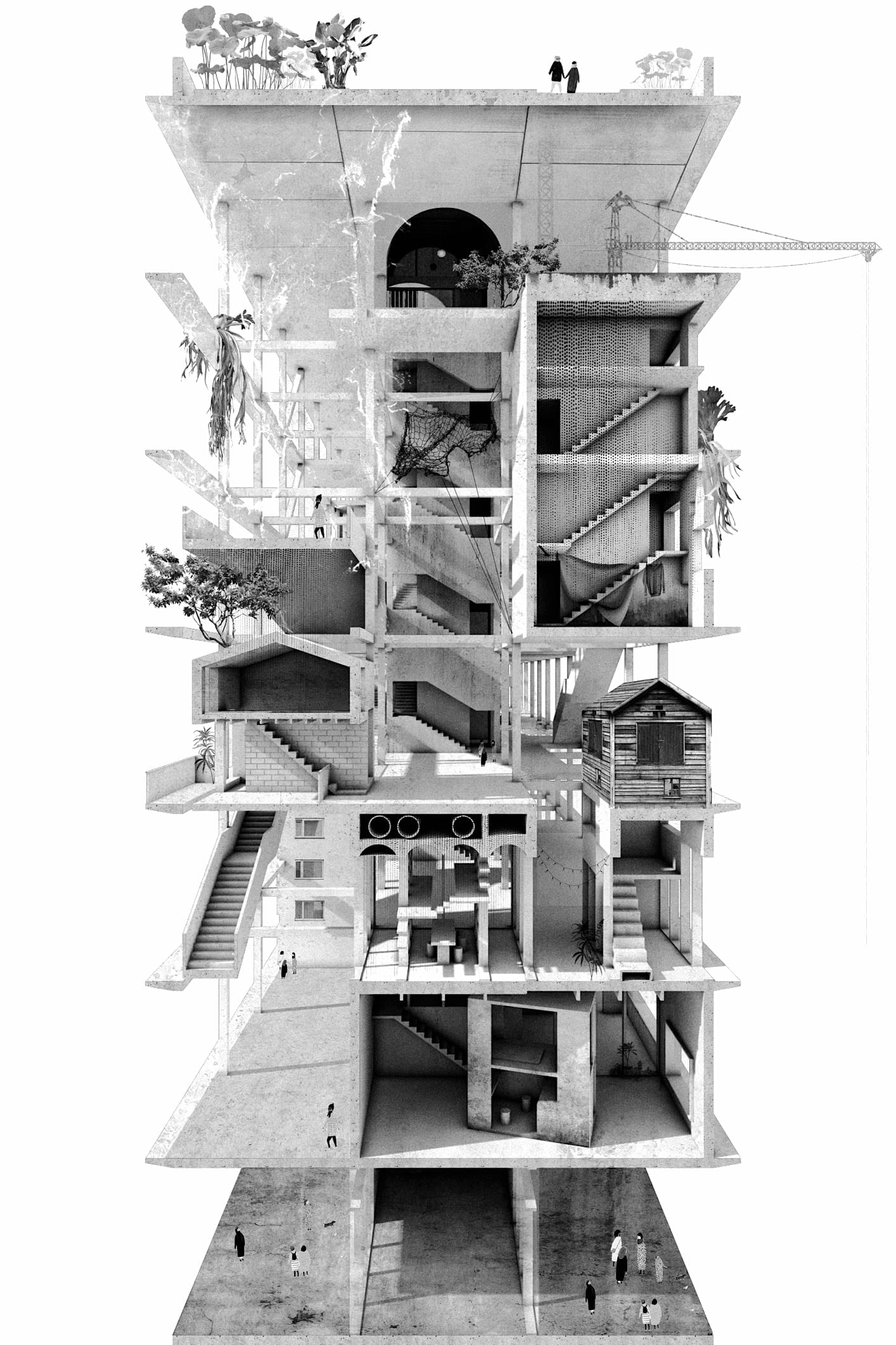
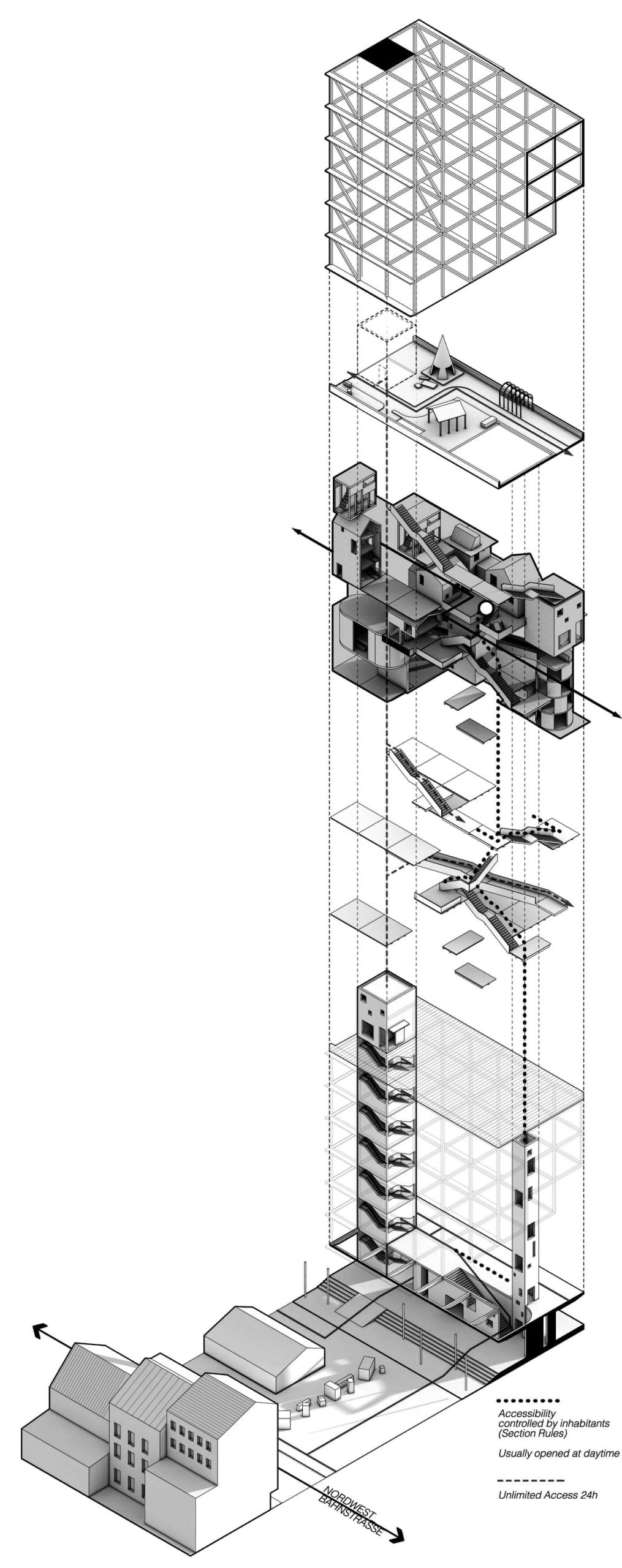
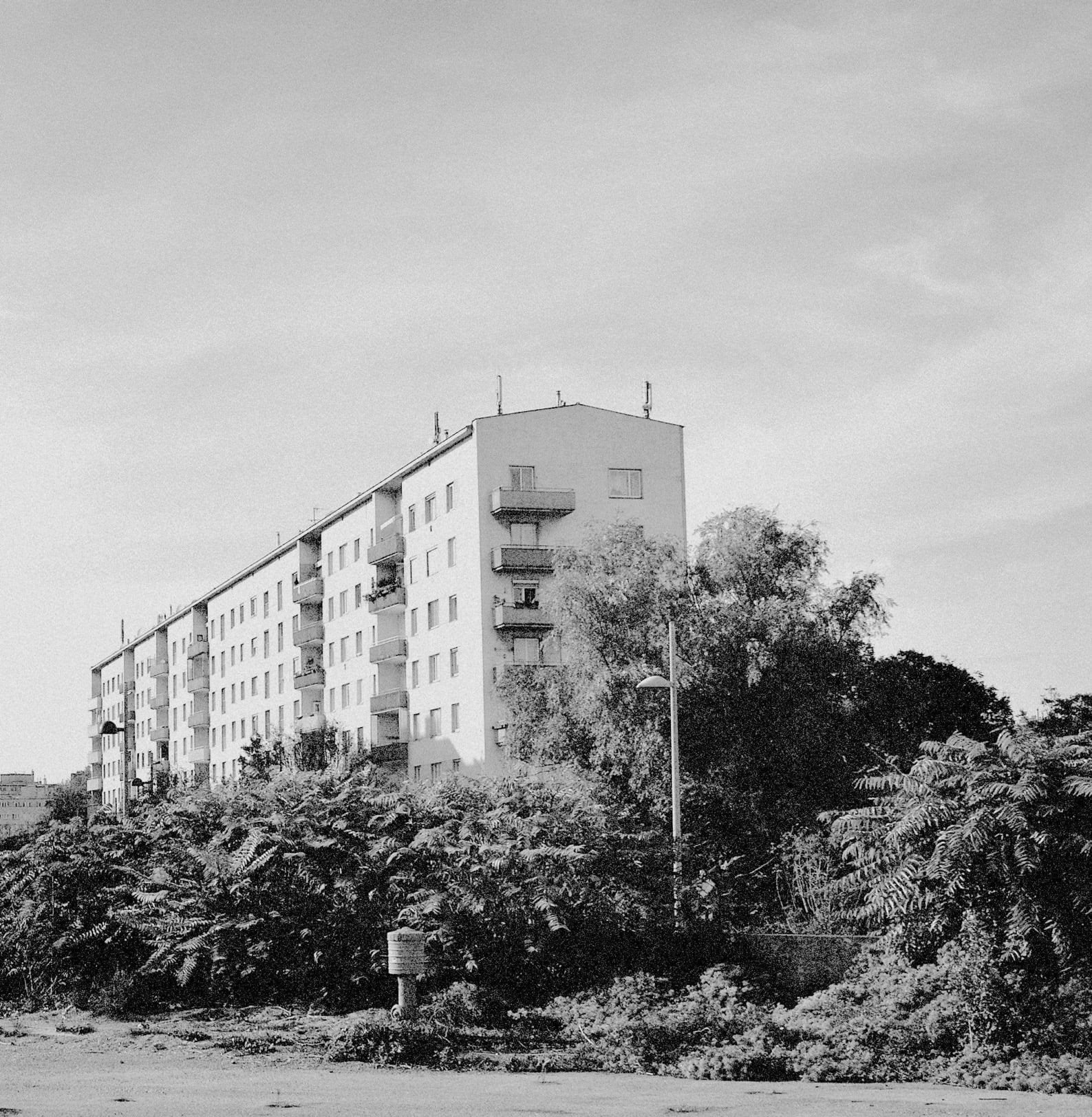



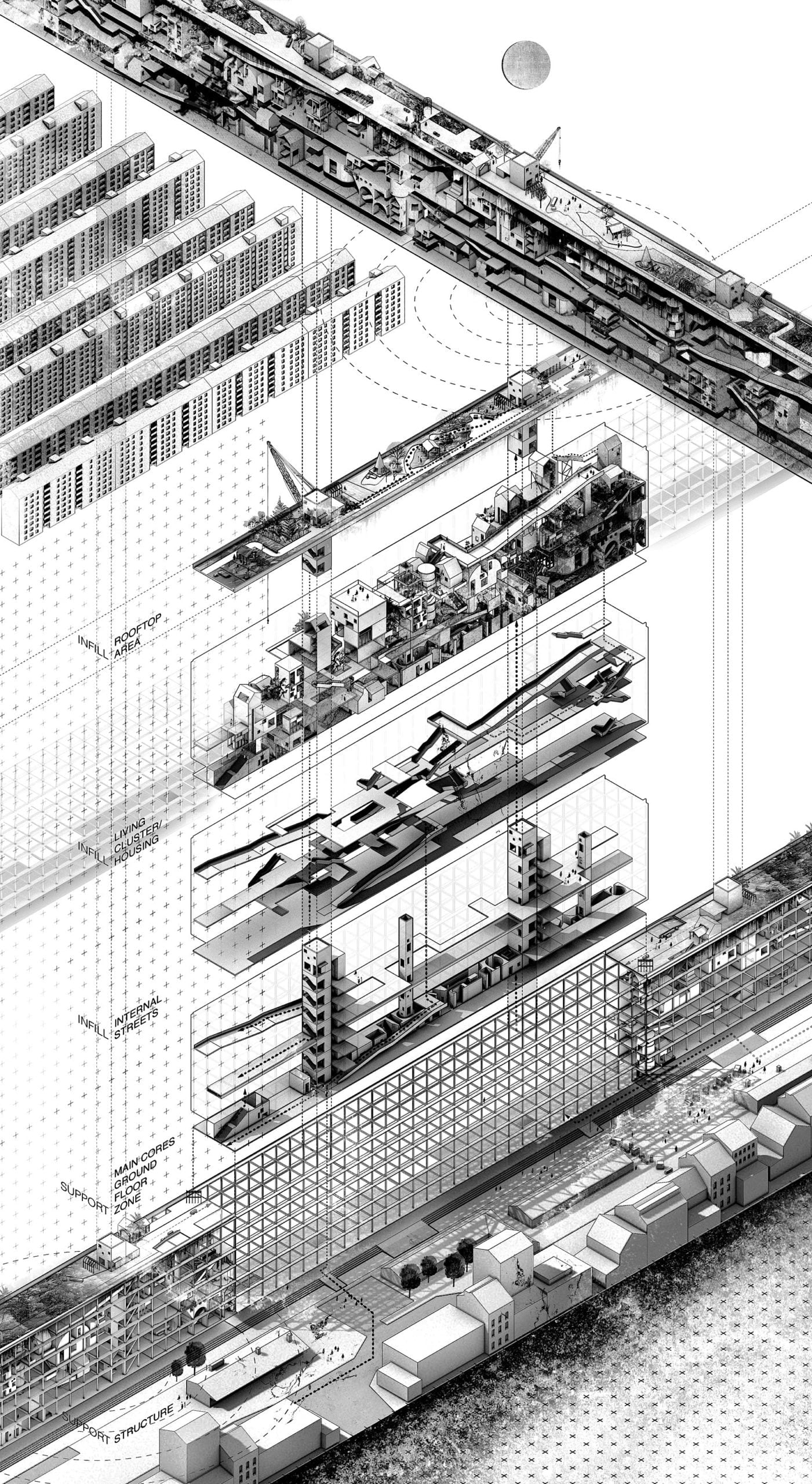
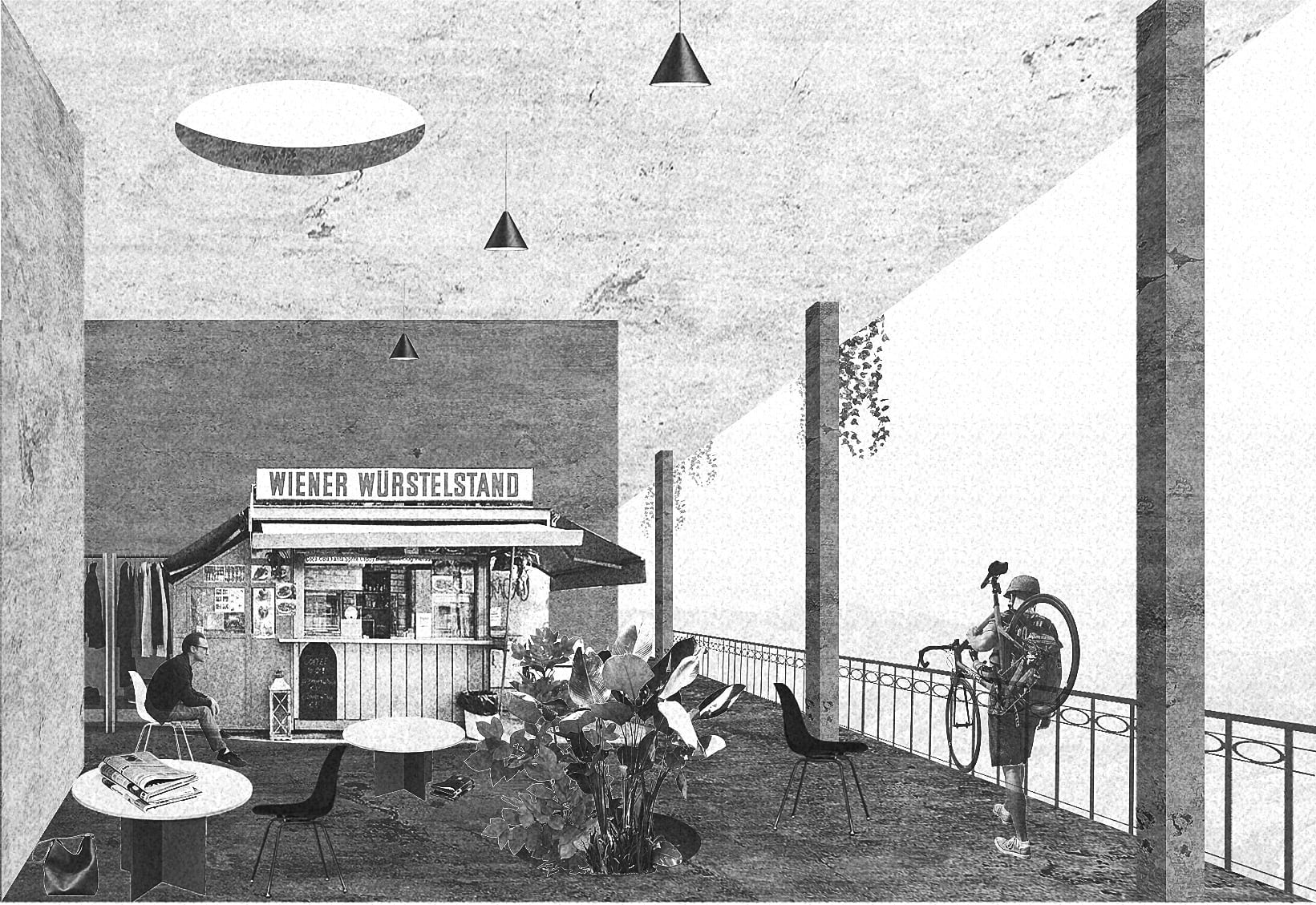
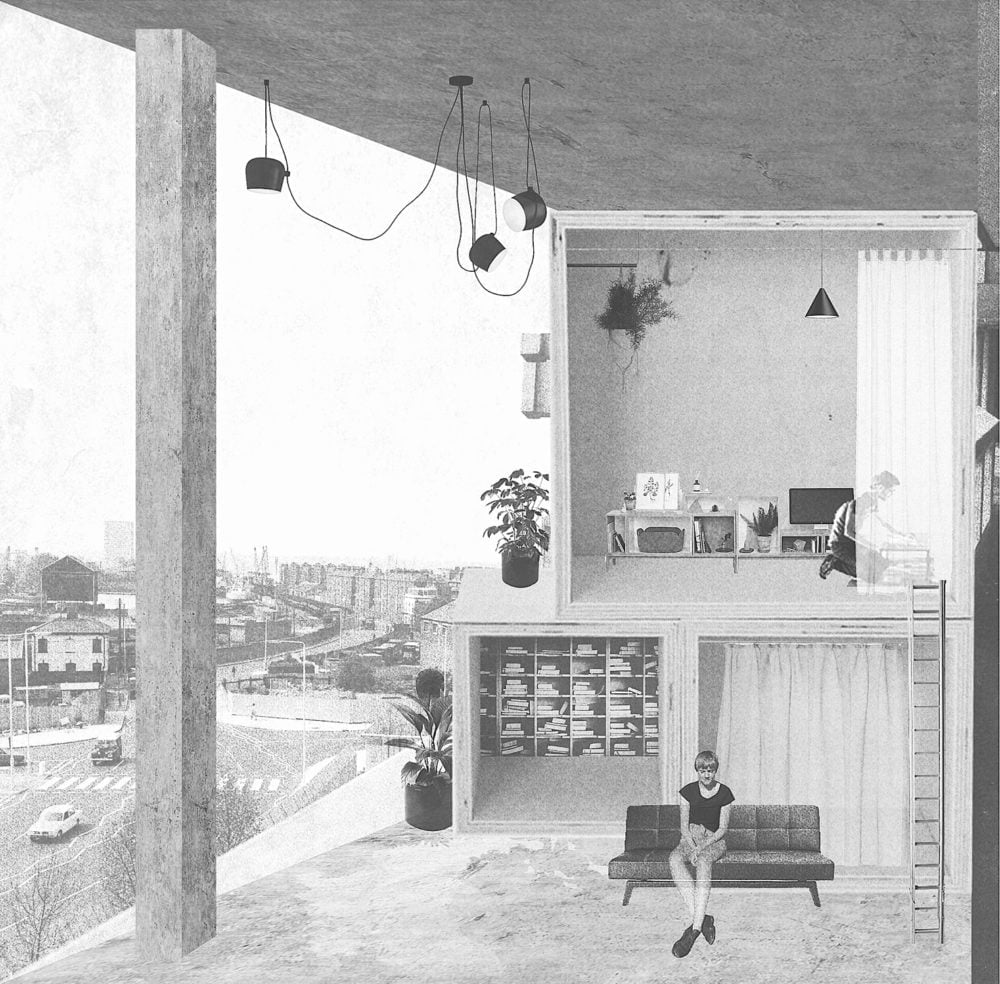
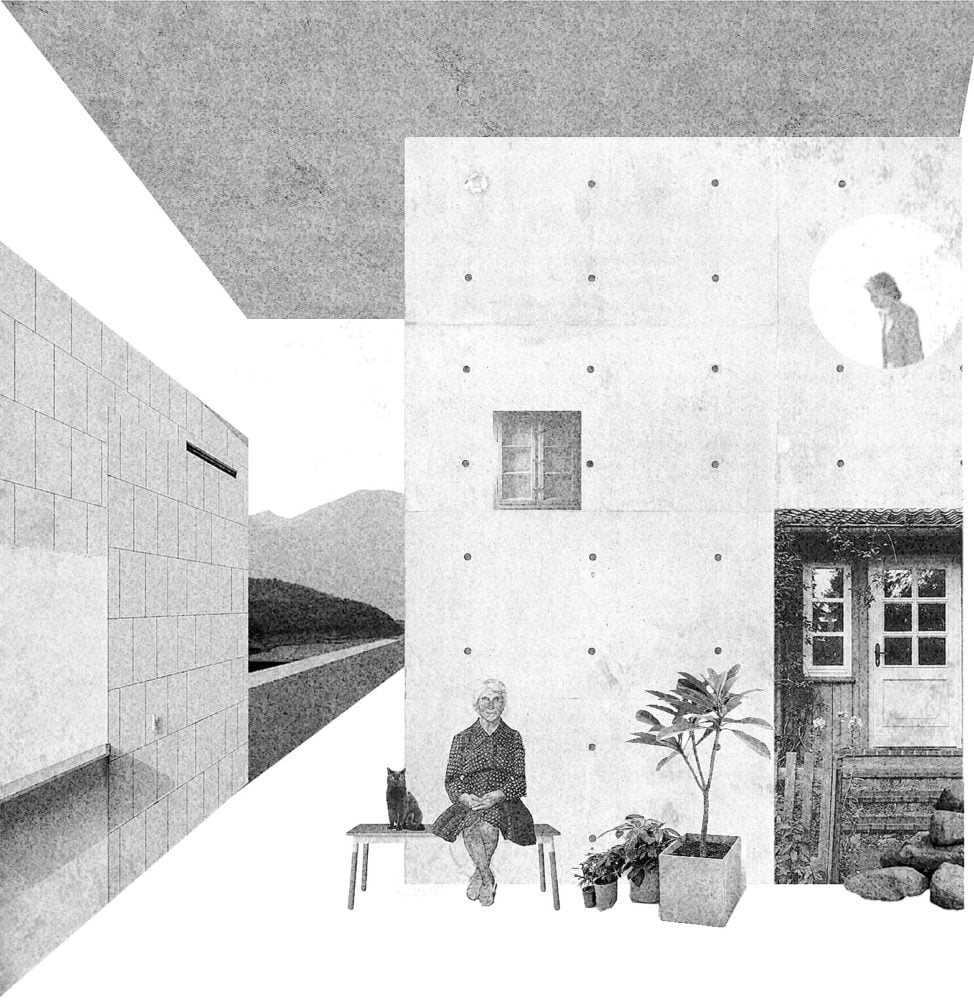
Sections


